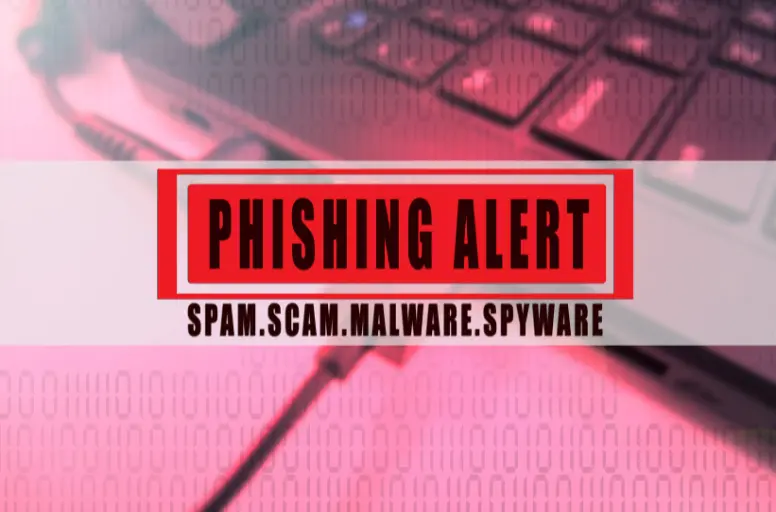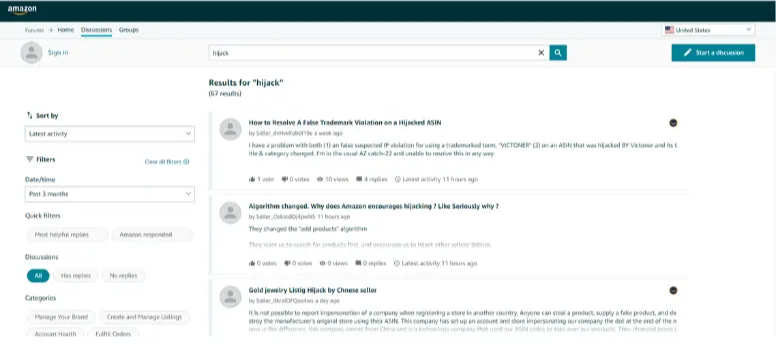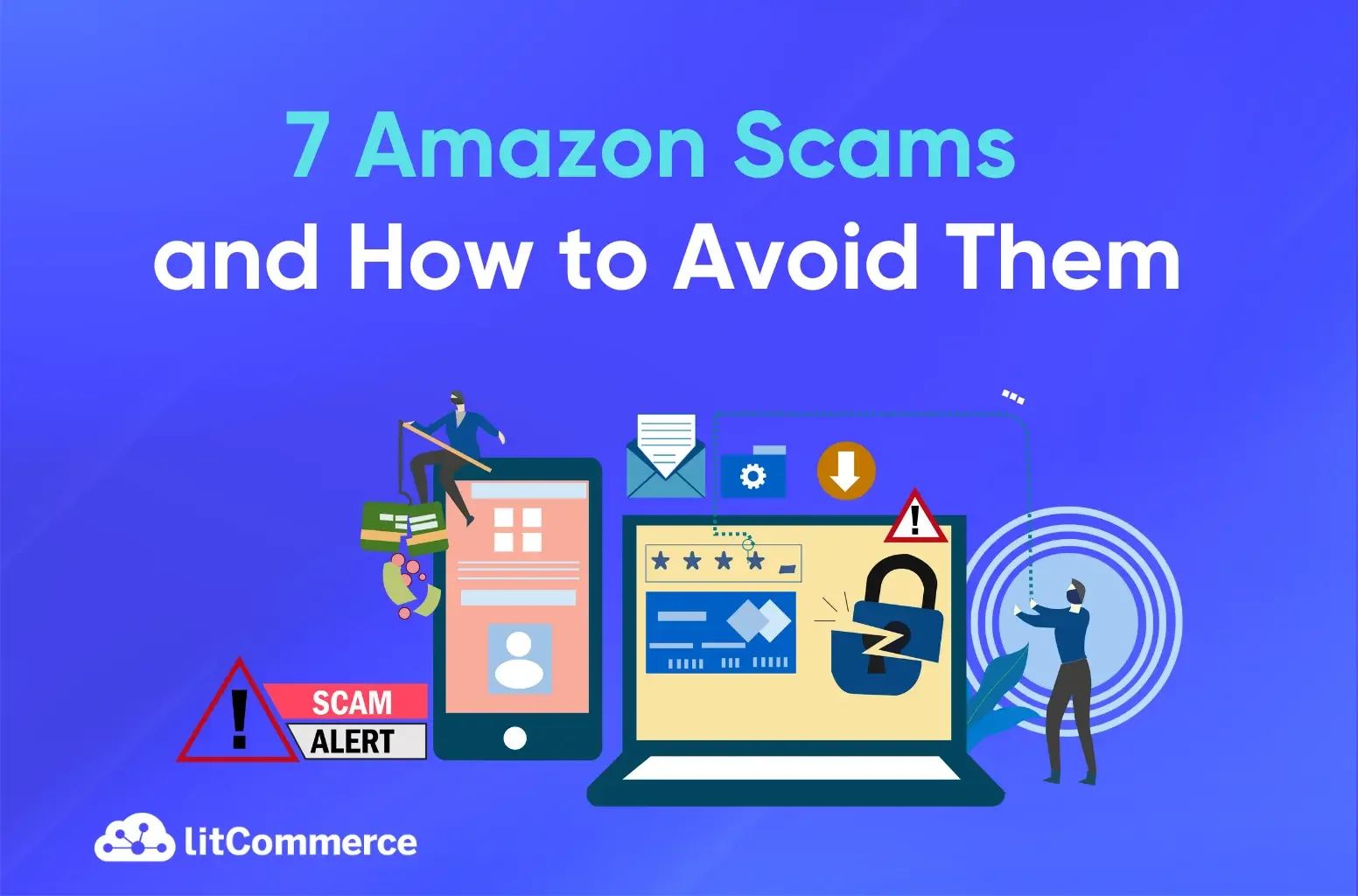As you may know, Amazon is where opportunities flourish for both buyers and sellers. But beware, alongside the convenience comes risks like Amazon seller scams. From phishing to counterfeit products, staying safe requires vigilance. In this guide, we’ll explore 7 common Amazon scams:
- #1. Account hijacking scams
- #2. Listing hijacking scams
- #3. Phishing scams
- #4. Brushing scams
- #5. Amazon suspension scams
- #6. “Fail delivery” scams
- #7. “Replace & refund” scams
We’ll also expose fraudsters’ tactics and offer tips on how to protect yourself. So, let’s dive in and uncover the secrets to navigating the Amazon safely.
What are the Most Common Amazon Scams?
As an Amazon seller, it’s crucial to stay alert and avoid falling for scams that could risk your account. Let’s explore a common Amazon scammer list:
#1. Account hijacking scams

Account hijacking scams are among the most popular Amazon scams today. Fraudsters often try to take control of Amazon seller accounts for their own benefit. Once they access your account, they might alter bank details, update product listings, or steal your business information.
Here’s a real-life example from RUN-CHICKEN, a company specializing in automatic chicken coop doors, who had their Amazon account hijacked. Hackers altered product listings and removed rightful users, leading to deactivated listings and significant damage to their revenue and reputation.
To protect yourself from account hijacking, use two-factor authentication (now mandatory on Amazon), create strong passwords (and update them regularly), and never share your login information. Also, keep an eye on your account for any unusual changes or activity.
#2. Listing hijacking scams
The next common Amazon scam is listing hijacking, in which fraudsters offer fake or counterfeit versions of your product on your listings, pretending they are real.
These Amazon fake sellers sneakily put their products under your ASIN listing, hoping customers will buy from them instead of you. So, customers might think they’re buying from you but getting a fake one.
Once the scammers get an order, they give a fake tracking number and never send anything. These scams don’t just hurt your business reputation. They can also lead to bad reviews, lots of returns, and other account problems.
Amazon listing hijacking often comes in two forms:
- Full hijacking: When a hijacker takes over a listing entirely, controlling everything from the title and description to images and pricing.
- Partial hijacking: When a hijacker only gains control of specific parts of a listing, like the pricing or the Buy Box.
#3. Phishing scams

Phishing is when scammers pretend to be real companies to get your private information. They might use phone calls, texts, or emails for this scam. Here are common signs of Amazon phishing scams:
- Suspicious sender address: Check the sender’s email address. Scam emails might look like they’re from Amazon, but you can see the actual email address by clicking the sender’s name. It won’t be from an official Amazon.com address.
- Generic greetings: Be wary of emails that start with “Dear customer” or “Greetings from Amazon.” Genuine Amazon emails will always address you by your name.
- Spelling and grammar mistakes: Many scam emails have spelling or grammatical errors because they often come from non-native English speakers. Look for unusual wording or mistakes.
- Low-quality images: If the email has blurry logos or poor-quality images, it’s likely a scam. Official Amazon emails will always look professional.
- Urgent messages: Scammers try to create a sense of urgency to make you act quickly. Amazon will never threaten to cancel your order or suspend your account to pressure you into clicking a link or providing information.
Sometimes, they use tricky links like https://sellercentral-secure-amazon.com. It looks real with “Seller Central” and “Amazon,” but if you paste it into a private browser, it’s fishy.
To avoid these Amazon scams, always check sender info and don’t click on weird links. Amazon won’t ask for your login or secrets through email or text, so be careful with emails or messages that claim to be from Amazon.
#4. Brushing scams
Brushing scams on Amazon is when scammers send unordered packages to random recipients’ addresses. By creating fake accounts, they use these deliveries to post false reviews. But Amazon doesn’t like fake reviews. If caught, sellers can get kicked off.
To avoid these scams, follow Amazon’s rules. Sell good products, provide great service, and ask customers for real reviews.
#5. Amazon suspension scams
Amazon suspension scams happen when fake Amazon workers claim your account faces suspension or deactivation. They ask for money or your account info to fix it. In fact, they are scammers and not really from Amazon.
To avoid these Amazon scams, always check if the email or call is real with Amazon support. Also, keep an eye on Amazon’s rules to make sure you’re following them correctly.
#6. “Fail delivery” scams
Amazon FBA scams can also come from buyers, which is commonly known as the “fail delivery” scam. While this is too old, but still happens a lot. Here’s how it goes:
A buyer buys something online and claims it never arrived. They ask for a replacement or refund, even if they got it.
Sometimes, this is true, but it’s important to protect yourself from scams. Bad feedback can hurt your seller stats.
So when shipping expensive items to your customers, always use track-and-trace postage besides buying UPC codes for Amazon products. It helps during disputes and proves when the item arrived. In other words, the recipient has to sign for the delivery.
#7. “Replace & refund” scams

This Amazon seller fraud is just as it sounds. A seller sends an item to the buyer, who then swaps it for an old or damaged one and asks for a refund.
This happens a lot, especially in the gaming world. If you sell gaming consoles or similar items on Amazon, be cautious.
The scammer orders a game, receives it, then switches it with a broken one and sends it back, claiming it’s faulty. It’s tough for the seller to prove otherwise, as even pictures may not be reliable evidence.
But there’s a solution: do a proper quality check and use tamper-proof stickers. These stickers are special and tear when removed, showing if the item has been swapped.
You can buy these stickers online in bulk for cheap. They’re a smart way to make sure the item a customer returns is the same one you sent. You can also mention in your product description that you test items and include a warranty sticker to prevent scams.
These scams can cause a high order defection rate (ODR), which reflects poor customer service and operation. ODR is one of the top 10 most important Amazon performance metrics to track.
Avoiding common scams is crucial for success as an Amazon reseller. Understanding the potential risks and implementing preventive measures can help you protect your business and maintain a positive selling reputation. To learn more about the strategies and best practices for reselling on Amazon, check out our comprehensive guide, “How to Resell on Amazon.
How to Protect Your Business from Amazon Scams?
Protecting your business from Amazon scams is crucial, considering the time and money you’ve invested. Here are some effective ways you can do to avoid common Amazon third-party seller scams:
1. Enroll in the Amazon Brand Registry program

First and foremost, to protect your brand and products from Amazon scams, consider enrolling in the Amazon Brand Registry program. This initiative is tailored to shield your brand and products from various scams and offers additional benefits such as advanced selling tools and exclusive advertising products.
Within the Brand Registry, Amazon provides three tools to combat counterfeit products:
- Transparency: Protect your brand and customers, enhance engagement, and detect supply chain issues.
- Project Zero: Swiftly remove counterfeit listings without the need for external contact.
- Counterfeit Crimes Unit: Collaborate with Amazon’s legal team to prosecute counterfeiters.
Additionally, brand owners gain access to a “Report a Violation” tool to report Amazon seller scams or inaccurate listings.
Overall, the Brand Registry is a paramount resource for Amazon sellers to uphold the integrity of their brands and products.
2. Report any suspected fraud to Amazon
If you suspect fraudulent activity, promptly email Amazon at [email protected] with “Fraudulent Activity” or “Possible Fraudulent Seller” in the subject line.
The message might say: “I suspect these sellers may be involved in fraudulent activity. Please investigate promptly.” Remember to provide details like the seller’s name and a link to their storefront.
Additionally, you can report suspicious activity on the official Amazon seller community forum. There’s a dedicated thread for reporting hijackers. By doing so, you contribute to keeping the platform safe for all sellers.
You can also visit the “Report a scam” page and click the appropriate link to report any suspicious activity.

Remember, swift action is key to addressing Amazon scams or fraudulent activities effectively. By staying vigilant and actively reporting suspicious behavior, you play a vital role in safeguarding your business and the integrity of the Amazon marketplace.
3. Pay attention to the sender’s email URL or ID

When it comes to protecting yourself from Amazon seller scams, paying attention to the sender’s email address is crucial. Here’s what you need to know:
Genuine emails from Amazon will always end with “@amazon.com” in their address. Be wary of any variations or new versions, as they may signal suspicious activity. If in doubt, check the email header details.
Some examples of suspicious email addresses often used by phishing artists include:
Be particularly cautious of URLs like https://sellercentral-secure-amazon.com, which may appear genuine at first glance but actually lead to a different site. Genuine Amazon URLs end with “.amazon.com” or “sellercentral.amazon.com” and won’t contain misleading variations like “amazon.com.biz” or “sellers-amazon.com.”
Besides, avoid clicking on shortened URLs in emails, as they may lead to Amazon seller fraud websites. Instead, hover over the link to see where it directs you. Be vigilant for any grammatical or spelling errors in emails, as these are often red flags for fraudulent activity.
By staying alert and scrutinizing email details, you can better protect yourself from falling victim to Amazon scams and keep your information safe.
4. Activate two-step verification

Undoubtedly, implementing 2-step verification is crucial for shielding yourself from Amazon marketplace scams. Here’s how it works:
Sellers can only access their Seller Central account through a 2-step authentication process. This involves receiving a random 6-digit code on your smartphone from apps like Google Authenticator or Authy. The entire process, including code generation and transmission, occurs seamlessly through the app and your smartphone.
5. Keep your confidential information private
If someone claiming to be from Amazon contacts you and asks you to log in using a 6-digit code they provide, it’s a warning sign. Never accept or enter such a code.
We can’t stress this enough: never share sensitive information like bank details or passwords. Amazon will never ask for these via email. Guard your personal information carefully and never disclose it to anyone, no matter how convincing they may seem.
Amazon Seller Scams – FAQs
Yes, if Amazon suspects your account is compromised, they’ll reach out to confirm your recent activities, like logins, purchases, or account adjustments. You can stay ahead by tracking login attempts via the “Secure Your Account” feature in Login & Security settings. If someone hacks your Amazon account, you might get locked out or notice strange activity, such as fake reviews or purchases you didn’t make. If you can’t access your account, reach out to Customer Service right away. To report Amazon phishing emails, simply forward them to [email protected] and follow the instructions in the follow-up email.
Ensure Your Amazon Seller Account is Protected
In conclusion, vigilance is key in navigating the world of Amazon scams. By staying informed, proactive, and alert to suspicious activity, you can protect yourself and your business from falling victim to fraudulent schemes.
Remember to report any suspicious behavior promptly and utilize available security features to safeguard your Amazon account and reputation.
If you have any questions about Amazon seller scams, don’t hesitate to contact us for help.



